-
HPLC Columns
- Close Menu ×
- C18 Columns
- C8 & C4 HPLC Columns
- HILIC HPLC Columns
- PFP & Phenyl HPLC Columns
- Bioseparation LC columns
- SEC HPLC Columns
- Ion Exchange HPLC Columns
- All HPLC Columns
- InertSustain C18 First choice for ultra-high inertness and high durability, delivering superior peak shapes with low back pressure.
- Inertsil ODS-3 Most popular C18, trusted for long-established methods, offering strong retentivity and high loading capacity.
- InertSustain AQ-C18 First choice for high-polarity compounds, delivering strong retention even under 100% aqueous mobile phases.
- Inertsil ODS-3V Validated version of ODS-3, designed for GLP/GMP compliance, ensuring batch-to-batch consistency.
- InertSustainSwift C18 Ultra-inert, fast-separation C18 for high-throughput LC-MS and LC-MS/MS with superior peak symmetry.
- InertSustain AX-C18 Mixed-mode C18 with anion exchange for strong retention of highly polar acidic compounds without ion-pairing.
- All C18 Columns visible-xs
- InertSustain C8 Ultra-inert C8 column for rapid analysis of hydrophobic compounds with symmetric peaks across a wide pH range.
- Inertsil C8 Ultra-pure silica C8 column for rapid analysis of hydrophobic compounds, ideal for legacy methods.
- InertSustainSwift C8 Ultra-inert C8 column for low-polarity analytes, peptides, and oligonucleotides with optimized 200Å pore size.
- Inertsil C8-3 Strong retentivity, very inert, and low back pressure, based on the same silica and bonding as Inertsil ODS-3.
- Inertsil WP 300 Wide-pore C8 column for rapid, high-resolution separation of proteins and peptides with sharper peaks.
- Inertsil C4 Low-retentivity C4 column for rapid analysis of highly hydrophobic compounds like fat-soluble vitamins.
- All C8 & C4 Columns visible-xs
- InertSustain Amide First choice for HILIC mode, offering the strongest retention of polar compounds with superior stability in water-rich conditions.
- Inertsil HILIC Diol-bonded HILIC column for excellent peak shape and strong retention of highly polar basic compounds.
- InertSustain NH2 First choice for sugar analysis, offering superior stability, reproducibility, and compatibility with weakly acidic eluents.
- Inertsil NH2 Aminopropyl column for sugar analysis, highly retentive in normal phase with superior stability and reproducibility.
- ProteoSil HILIC Bioseparation-focused HILIC column, excelling in hydrophilic compound, peptide, glycan, and oligonucleotide analysis.
- All HILIC Columns visible-xs
- InertSustain PFP A pentafluorophenyl-modified column designed for enhanced separation of structurally similar compounds through multiple retention mechanisms, including π-π, dipole, and hydrogen bonding interactions.
- InertSustain Phenyl A directly bonded phenyl group gives the InertSustain Phenyl column unique reversed-phase selectivity, ideal for separating polar compounds and structural isomers via π-π and hydrogen bonding interactions.
- InertSustain Phenylhexyl A phenylhexyl-bonded column that offers complementary selectivity to traditional alkyl-chain columns, providing high inertness, reproducibility, and low back pressure.
Get the Right Column for Your Compound — InstantlyWhat compound are you analyzing?QUICK LINKS- Application Search
- Product Catalogs
- About Us
- Promotions
-
Sample Preparation
- Close Menu ×
- SPE Cartridges & Columns
- Spin Columns
- Proteomics Products
- InertSep QuEChERS kit
- Cleanup/Separating Bulks
- SPE Manifolds
- ALL Sample Preparation
- InertSep C18 Silica sorbent with high end-capping, ideal for lipid removal & pesticide residue analysis.
- InertSep C18-ENV C18 sorbent with low end-capping, optimized for water analysis & anionic surfactant removal.
- InertSep HLB Versatile SPE column for extracting non-polar to highly polar compounds, with a wide pH range (1-14).
- InertSep C8 Silica sorbent with octyl groups, offering weaker retention than C18 for highly retained compounds.
- InertSep SCX Silica-based SPE column with strong cation exchange and non-polar interactions for enhanced retention.
- InertSep SAX Monofunctional C18 sorbent with medium end-capping, allowing secondary interactions for versatile use.
- All SPE Cartridges & Columns visible-xs
- MonoSpin C18 High-permeability spin column for peptide desalting, drug extraction, and fast biological sample preparation.
- MonoSpin ProA Fast Protein A spin column for high-purity IgG antibody purification with >90% recovery.
- MonoSpin C18-CX Mixed-mode spin column with C18 and cation exchange for enhanced basic drug recovery.
- MonoSpin Phospholipid TiO₂/ZrO₂-coated spin column for efficient phospholipid removal and matrix effect reduction.
- MonoSpin SAX Strong anion exchange spin column for fast extraction of acidic drugs with high recovery.
- MonoSpin TiO TiO₂ spin column for phospholipid removal and organophosphorus pesticide purification.
- All Spin Columns visible-xs
- Exosome Purification
- Desalting
- Digestion
- Fractionation
- Phosphopeptide Enrichment
- Centrifuge Accessories
-
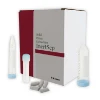 InertSep QuEChERS Kit High-purity extraction and cleanup kit for pesticide residue analysis in food and environmental samples.
InertSep QuEChERS Kit High-purity extraction and cleanup kit for pesticide residue analysis in food and environmental samples.
Get the Right Column for Your Compound — InstantlyWhat compound are you analyzing?QUICK LINKS- Application Search
- Product Catalogs
- About Us
- Promotions
-
GC Columns
- Close Menu ×
- InertCap Series
- TC Series
- GC Accesories
- All GC Columns
- InertCap 1MS General purpose, Hydrocarbons, PCBs, High Volatile solvents, Phenols
- InertCap 1 General purpose, Hydrocarbons, PCBs, High Volatile solvents, Phenols
- InertCap 5MS/Sil General purpose, Halogenated compounds, Phenols, Pesticides, FAME
- InertCap 5MS/NP General purpose, Halogenated compounds, Phenols, Pesticides, FAME
- InertCap 5 General purpose, Halogenated compounds, Phenols, Pesticides, FAME
- InertCap 624MS Residual solvents of Pharmaceuticals, VOCs, Alcohols
- All GC Columns visible-xs
Get the Right Column for Your Compound — InstantlyWhat compound are you analyzing?QUICK LINKS- Application Search
- Product Catalogs
- About Us
- Promotions
-
Instruments
-
 LD249 Gas Leak Detector Compact, easy-to-use leak detector with thermal conductivity sensor for fast, accurate gas detection. Replaces the LD239.
LD249 Gas Leak Detector Compact, easy-to-use leak detector with thermal conductivity sensor for fast, accurate gas detection. Replaces the LD239. -
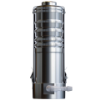 FM4: Air Sampler for PFAS Low-volume air sampler for PFAS enabling comprehensive analysis of both gas and particle phases in a single sampling using stage-optimized materials.
FM4: Air Sampler for PFAS Low-volume air sampler for PFAS enabling comprehensive analysis of both gas and particle phases in a single sampling using stage-optimized materials. -
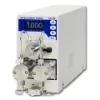 Intelligent Pump UI-32 Series Next-generation dual-plunger HPLC pump with ultra-low pulsation and automated pressure control for flow chemistry.
Intelligent Pump UI-32 Series Next-generation dual-plunger HPLC pump with ultra-low pulsation and automated pressure control for flow chemistry. -
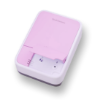 OralChroma Halitosis Measuring Device High-precision breath analyzer using gas chromatography to quantify VSCs in 4 minutes — fast, reliable, and maintenance-free.
OralChroma Halitosis Measuring Device High-precision breath analyzer using gas chromatography to quantify VSCs in 4 minutes — fast, reliable, and maintenance-free.
-
 LD249 Gas Leak Detector Latest model replacing LD239, with thermal conductivity detection for helium, hydrogen, and other gases.
LD249 Gas Leak Detector Latest model replacing LD239, with thermal conductivity detection for helium, hydrogen, and other gases. -
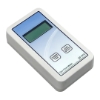 GF1010 Digital Gas Flowmeter Portable, volumetric meter for accurate GC gas flow measurement without gas selection.
GF1010 Digital Gas Flowmeter Portable, volumetric meter for accurate GC gas flow measurement without gas selection.
-
 Intelligent Pump UI-32 Series Next-generation dual-plunger HPLC pump with ultra-low pulsation and automated pressure control for flow chemistry.
Intelligent Pump UI-32 Series Next-generation dual-plunger HPLC pump with ultra-low pulsation and automated pressure control for flow chemistry. -
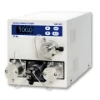 Intelligent Micro Pump MP-32 Series Compact micro pump with ultra-low pulsation and high-pressure stability, ideal for flow chemistry and precision dosing.
Intelligent Micro Pump MP-32 Series Compact micro pump with ultra-low pulsation and high-pressure stability, ideal for flow chemistry and precision dosing. -
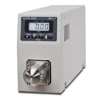 Auto BPR BP-11 Auto Back Pressure Regulator for the UI-22 Series, maintaining stable pressure for consistent flow.
Auto BPR BP-11 Auto Back Pressure Regulator for the UI-22 Series, maintaining stable pressure for consistent flow. -
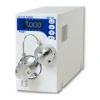 PCS Pump SP-32 Series Single plunger pump with real-time pressure control and low-pulsation flow—ideal for precise fluid delivery.
PCS Pump SP-32 Series Single plunger pump with real-time pressure control and low-pulsation flow—ideal for precise fluid delivery. - All HPLC Pumps visible-xs
-
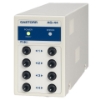 Gastorr AG Series Reliable, CPU-controlled degassing system for low-flow applications with independent chamber design.
Gastorr AG Series Reliable, CPU-controlled degassing system for low-flow applications with independent chamber design. -
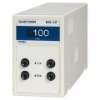 Gastorr BG Series High-performance degassing system with real-time vacuum display and independent chamber design.
Gastorr BG Series High-performance degassing system with real-time vacuum display and independent chamber design. -
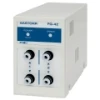 Gastorr FG-42 Solvent degassing system optimized for fluorinated solvents with real-time vacuum display.
Gastorr FG-42 Solvent degassing system optimized for fluorinated solvents with real-time vacuum display. -
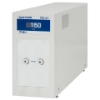 Gastorr PG Series High-flow degassing system for fractionating applications with real-time vacuum display.
Gastorr PG Series High-flow degassing system for fractionating applications with real-time vacuum display. - All Degassing Units visible-xs
QUICK LINKS- Application Search
- Product Catalogs
- About Us
- Promotions
-
-
Accessories
- Close Menu ×
- HPLC Accesories
- SPE Accessories
- GC Accessories
- HPLC Tubing
- Filters
- HPLC Fittings
- Solvent Bottle Caps and Other Accessories
- Gradient Mixer
- Regulator
- IDEX Accessories
- HPLC Column Hardware and Other Accessories
- SPE Vacuum Manifolds
- SPE Gravity Manifolds
- Cleanup/Separating Bulks
- Glass Chromatography Columns
- General SPE Accessories
QUICK LINKS- Application Search
- Product Catalogs
- About Us
- Promotions
-
Applications & Industries
- Close Menu ×
- Featured
- PFAS Solutions Products and workflows for EPA and ISO-compliant PFAS testing in water, air, and soil.
- Flow Chemistry Solutions Integrated pumps and pressure regulators for continuous, high-temperature flow chemistry reactions.
- Life Science/Bio Products Spin columns and purification tools for antibody capture, protein cleanup, and bioseparation workflows.
- Gas/Air Sampling Equipment Sampling tools for capturing VOCs, aldehydes, and trace gases in environmental and industrial settings.
QUICK LINKS- Application Search
- Product Catalogs
- About Us
- Promotions
-
Resources
- Close Menu ×
- All Resources
QUICK LINKS- Application Search
- Product Catalogs
- About Us
- Promotions
- About
- Contact Us
Search
You have no items in your shopping cart.
Types of Liquid Stationary Phases for Gas Chromatography
Jul 01, 2024 | Gas Chromatography
In the second installment of our series about capillary columns for gas chromatography (GC), we focus on liquid stationary phases, the most popular type of phase for capillary GC columns. We examine the major types of liquid stationary phases, their features, and challenges.
Polarity is the principal factor determining the capability of a stationary phase to retain gas or volatile components in gas chromatography, as particles are drastically farther apart than in other phases, and interaction between particles is much more limited.
Liquid phases for general analysis are based on a strong skeleton, which is functionalized with different groups to modify their polarity. Liquid phases for general analysis are structurally divisible into silica-based phases and polyethylene glycol (PEG) phases, also referred to as WAX phases.
Silica-based liquid phases
Silica-based phases are founded on a siloxane (Si-O-Si) skeleton. Group modification is done at the Si terminals. Silica-based liquid phases generally exhibit low to medium polarity. Common substituent groups include the following:
Table 1. Comparison of Capillary and Packed GC columns
100% Dimethylpolysiloxane

InertCap 1, InertCap 1MS Non-polar
5% Diphenyl (equiv.) -Dimethylpolysilphenylene siloxane

InertCap 5MS/Sil, InertCap Pesticides Low polarity
5% Diphenyl 95% Dimethylpolysiloxane

InertCap 5MS/NP, InertCap 5 Low-polarity
6% Cyanopropylphenyl 94% Dimethylpolysiloxane

InertCap 624, InertCap 1301 Medium-polarity
25% Diphenyl 75% Dimethylpolysiloxane

InertCap 25 Medium-polarity
35% Diphenyl 65% Dimethylpolysiloxane

InertCap 35 Medium-polarity
14% Cyanopropylphenyl 86% Dimethylpolysiloxane

InertCap 1701 Medium-polarity
50% Diphenyl 50% Dimethylpolysiloxane

InertCap 17MS, InertCap 17 Medium-polarity
50% Trifluoropropyl 50% Methylpolysiloxane

InertCap 210 Medium-polarity
50% Cyanopropylmethyl 50% Phenylmethylpolysiloxane

InertCap 225 Medium-High polarity
Commercially available silica columns have produced standard naming conventions and ratios of functional groups for silica-based phases (–1, –5, –1701, –35, etc.).
Stationary phases used for capillary columns have two types: solid phases and liquid phases. Liquid stationary phases are much more common for general analysis. Capillary columns can be grouped into three types based on the method the stationary phase has immobilized on the inner walls: Wall-Coat Open Tubular (WCOT) column, Support-Coated Open Tubular (SCOT) column, Porous-Layer Open Tubular (PLOT) column. The different types are described below:
WAX-based liquid phases
WAX-based liquid phases use a polyethylene glycol (-(CH2)2O-) polymer backbone. WAX-based phases are more polar than silica-based phases and less thermally stable, decomposing at around 280 °C. Free fatty acid phase (FFAP), which is a polymer of polyethylene glycol and nitro terephthalate, is very polar and is used in free fatty acid and fatty acid ester analyses.
Polyethylene Glycol

InertCap Pure-WAX, InertCap WAX, InertCap WAX-HT
Nitroterephthalic acid modified Polyethylene Glycol

InertCap FFAP High-polarity

Image 1. Relative Polarities of GL Sciences GC Stationary Phases
Special liquid phases
Aside from these general-purpose phases, liquid phases for specialized applications are also employed. Examples include special siloxane-based phases for the measurement of volatile organic compounds and chiral stationary phases for separating enantiomers.
| Column | Phase | Polarity |
Application |
| InertCap for Amines | Special liquid phase | - | Amine Compound, Alcohol |
| InertCap CHIRAMIX |
Special liquid phase | - | Optical Isomer |
| InertCap AQUATIC |
25% Diphenyl | Middle | VOC, Organic Solvent |
| InertCap AQUATIC-2 |
25% Diphenyl 75%Methylpolysiloxanee | Middle | VOC, Organic Solvent |
Challenges of liquid stationary phases
Silica- and WAX-based phases have some limitations. Residual metals, halides, and silanols from incomplete polymerization can cause unwanted interactions with components, leading to peak degradation. These residues can also cause phase degradation when exposed to moisture or oxygen.
Comparison of High-Adsorptive Samples

Image 2. Residues leading to peak degradation in WAX-based columns. GL Sciences' proprietary processing technology eliminates residues, providing highly inert columns with excellent peak symmetry for the analysis of polar, basic, and acidic compounds, as well as metal ligands.
Column bleed is another concern. Insufficient bonding, cross-linking, and residues can cause stationary phases to decompose and be eluted, especially at high temperatures. This leads to significant increases in the baseline until the column loses all retentive capability.

Image 3. Column bleed causing phase degradation. GL Sciences InertCap GC columns are highly cross-linked and surface-deactivated to ensure ultra-low bleed performance.
Summary
There are different types of liquid phases for capillary GC columns. Compatibility with components is primarily determined by polarity. Commercially available stationary phases face production challenges, making it important to choose the right column for your process.
We hope you've gained a deeper understanding of liquid stationary phases for capillary GC columns. Check back for the next article in our series on capillary columns for gas chromatography, where we will discuss column specifications.
For more information, take a look at GL Sciences' selection of capillary GC columns.
Need Help Finding the Right Capillary GC Column for
Your Lab's Gas Chromatography Needs?
